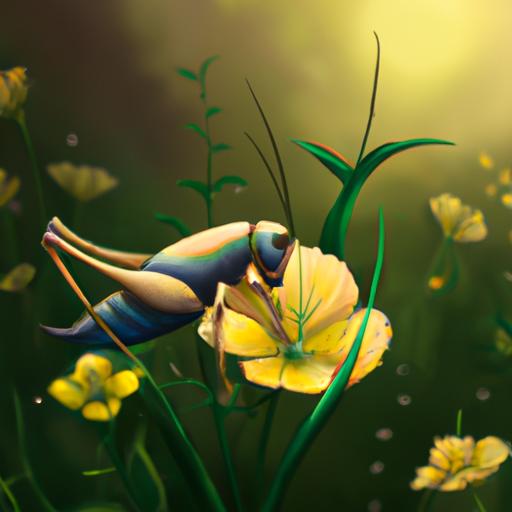Have you ever heard of spider crickets, or “camel crickets?” These strange and creepy-looking insects have been known to invade buildings, basements, and other enclosed spaces. While they may look intimidating, the question remains: do spider crickets bite? In this comprehensive guide, we will cover everything you need to know about spider crickets, including their appearance, where they live, if they are harmful, and of course, whether or not they bite. Read on to learn more about these unique creatures and how to keep them away from your home.
Table of Contents
Short Answer
Spider crickets, also known as camel crickets or cave crickets, are not known to bite humans.
They do have powerful jaws and may bite if they are handled or disturbed, but this is not common.
Spider crickets can be a nuisance pest, however, because they may enter homes and other buildings in search of food and water.
What are Spider Crickets?
Spider crickets, also known as camel crickets, are a type of insect that are often found in basements and other damp areas.
They are a type of true cricket and are usually brown or gray in color.
They have long, slender antennae and spindly legs that give them a spider-like appearance.
While they may look like spiders, they are actually not related.
Spider crickets have a humped back and long jumping hind legs, which enable them to move around quickly.
They also have large eyes and ears, which allow them to hear low-frequency sounds.
They typically grow to about 1 to 2 inches in length, and their bodies are covered in fine hairs.
Spider crickets are omnivorous, meaning they eat both plants and other small insects.
They are also scavengers, which means they eat anything that is available to them.
They are nocturnal, so they are most active at night.
Spider crickets are common in many parts of the world, including the United States, Canada, and Europe.
They are usually found in damp, dark areas such as basements, attics, and crawl spaces.
They can also be found in gardens and other outdoor areas.
Appearance of Spider Crickets

Spider crickets, also known as camel crickets, are an insect that often haunt basements and other damp places.
Though they may look like spiders, they are actually not related.
Despite their creepy appearance, spider crickets have a few unique characteristics that easily set them apart from their arachnid counterparts.
For starters, spider crickets are much larger than a typical spider.
Depending on the species, they can range in size from 1/2 inch to 1 1/2 inches.
They also have a distinct hump-backed shape, which gives them the nickname camel crickets.
In addition to their size and shape, they have long antennae and powerful hind legs.
These legs allow them to jump or hop around, making them seem even more intimidating.
Perhaps the most distinctive feature of spider crickets is their color.
They are usually a shade of brown, although they can also be tan or even black.
Many species also have a mottled pattern on their backs, which can make them appear even more daunting.
Where do Spider Crickets Live?
Spider crickets are found in dark, damp areas like basements, sheds, and other places where there is limited light and moisture.
They can even be found outdoors in shady areas such as under rocks or logs.
These crickets are also found in leaf litter and around damp woodpiles.
They are especially common in areas that have been recently disturbed, such as construction sites or recently-disturbed lawns.
Spider crickets tend to be most active at night, when they come out to feed on decaying plant material and other insects.
They are also attracted to light and can often be found near windows or lights.
They do not have wings and are unable to fly, so they will use their long legs to jump or hop around in search of food.
Do Spider Crickets Bite?

When it comes to spider crickets, a common question arises: do they bite? The answer is a resounding no. While spider crickets might look like spiders, they are actually not related and are completely harmless to humans. Spider crickets have long, spindly legs, and their bodies are generally a light brown color. They are often found in damp, dark places such as basements, sheds, and woodpiles.
Spider crickets have no venom and do not bite humans.
They may jump or hop around, but they are not aggressive and will not attack humans.
In fact, spider crickets may even be beneficial to have around as they help to control other insect populations.
For this reason, it is best to leave them alone and let them do their job.
Though spider crickets are generally harmless, they can cause some damage if left unchecked.
Spider crickets feed on organic material such as fabric, paper, and wood.
They can also cause damage to plants, as they can chew on the leaves and stems of certain vegetation.
In order to prevent any damage, it is important to inspect your home for spider crickets and remove them if necessary.
Though spider crickets are generally harmless, it is still important to be aware of their presence and take the necessary steps to control their population.
If you find spider crickets in your home, it is best to call a pest control professional to help you get rid of them.
In conclusion, spider crickets do not bite and are generally harmless to humans.
However, they can still cause damage to fabrics, paper, wood, and plants if left unchecked.
Therefore, it is important to be aware of their presence and take the necessary steps to control their population.
Are Spider Crickets Harmful?
Spider crickets, or camel crickets as they are commonly referred to, are an insect that can often be found in dark, damp areas such as basements.
Though they may appear to be spiders, they are actually not related to them.
The spider cricket has an oval shaped body with long bent legs and antennae, whereas spiders have a more round body and eight legs.
Despite their creepy appearance, spider crickets are harmless and do not bite.
They may hop or jump around, but they will not pose any kind of threat to humans.
So, if you are wondering if spider crickets bite, the answer is no.
Spider crickets are not harmful and should not be feared.
They are not known to carry any kind of disease, and they do not spread any kind of infection.
In fact, these insects can actually be beneficial to humans because they feed on other insects that may be harmful.
Spider crickets can be a nuisance, however, as they often enter homes in search of food.
They are attracted to moisture, so if your home has any damp areas, you may find spider crickets there.
If this is the case, you should take steps to remove the moisture and eliminate the spider cricket population in your home.
How to Get Rid of Spider Crickets

Though they may look intimidating, spider crickets are actually harmless and, contrary to their name, do not bite.
But if youre still feeling uneasy about their presence in your home, there are a few steps you can take to get rid of them.
The first step is to identify the source of the spider crickets.
These insects are often found in damp, dark places such as basements or crawl spaces, so its important to find the location theyre coming from.
Once youve identified the source, you can take steps to reduce moisture in the area, as spider crickets are attracted to damp conditions.
Sealing any cracks or openings in the walls or around windows and doors can also help prevent them from entering the home.
Another way to get rid of spider crickets is to use chemical insecticides.
These products can be found at most home and garden stores.
However, its important to use these products safely and follow all directions on the label.
Its also important to take extra precautions when using these products near children and pets.
Finally, you can also use natural methods to get rid of spider crickets.
These include using natural predators such as spiders, birds, and lizards, or using natural repellents such as essential oils or diatomaceous earth.
No matter what method you choose, its important to keep in mind that spider crickets do not bite and are not dangerous to humans.
If you take the proper precautions and follow the steps outlined above, you should be able to quickly and easily get rid of these pesky insects from your home.
Prevention of Spider Crickets
When it comes to preventing spider crickets from entering your home, there are a few steps you can take.
To begin, make sure there are no gaps or cracks in the foundation or walls of your home.
This will help prevent any potential entry points for the crickets.
Additionally, keep your home dry and well ventilated.
Spider crickets prefer moist, damp environments, so a well-ventilated area will help deter them.
Lastly, its important to inspect any items that are brought into your home, such as furniture, boxes, or clothing, as spider crickets may be hiding in these items.
Another way to prevent spider crickets from entering your home is to make sure there is no food or water sources for them.
This means keeping your floors and surfaces free of food scraps and crumbs, as well as making sure to store all food items in sealed containers.
Additionally, be sure to repair any leaky faucets or pipes, as this can provide an ideal breeding ground for the crickets.
Finally, its important to keep your yard free of clutter and debris, as this can provide an ideal hiding space for spider crickets.
Be sure to keep grass and vegetation trimmed, and remove any fallen leaves or branches from your yard.
Additionally, make sure to keep your gutters clear of debris, as clogged gutters can also provide breeding grounds for the crickets.
By taking these simple steps, you can help to prevent spider crickets from invading your home.
Final Thoughts
Spider crickets may look creepy and intimidating, but they actually pose no threat to humans.
They do not bite and are harmless, so there is no need to fear them.
However, if they become too numerous in your home, there are steps you can take to get rid of them or prevent them from entering in the first place.
Now that you know more about spider crickets, you can be prepared the next time you come across one.

